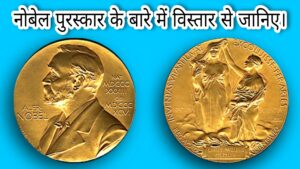साधारण वाक्यों के लिए Direct और Indirect के नियम
Assertive Setences में Direct से Indirect बनाते समय निम्नलिखित नियमो का पालन करना चाहिए l –
1-यदि Direct speech में reprting verb के साथ object भी आया हो तो Indirect बनाते समय reporting verb को निम्न प्रकार बदलते है-
| Direct | से | Indirect |
| say to | को | tell |
| says to | को | tells |
| said to | को | told |
For Example:-
Direct- The teacher said to me, “You are a naughty boy.”
Indirect- The teacher told me that I was a naughty boy.”
2-यदि रिपोर्टिंग verb के बाद object न दिया हो तो आने वाले say, says तथा said में कोई परिवर्तन नहीं करते है l
For Example:-
Direct- The teacher said, “You are a naughty boy.”
Indirect- The teacher said that you were a naughty boy.”
3-Comma तथा Inverted commas को हटा कर that का प्रयोग करते है l
For Example:-
Direct- The teacher said, “You are a naughty boy.”
Indirect- The teacher said that you were a naughty boy.”
4-Inverted capital Commas के अन्दर प्रथम शब्द के प्रथम अक्षर को small कर देते है, परन्तु Proper Noun तथा I रहने पर उसे capital ही रहने देते है l
For Example:-
Direct- The teacher said, “You are a naughty boy.”
Indirect- The teacher said that you were a naughty boy.”
5-अगर रिपोर्टिंग भाग direct speech के बीच में या अंत में दिया है तो उसे Indirect बनाते समय पहले लिखते है l
For Example:-
Direct- “You are a naughty boy”, the teacher said.
Indirect- The teacher said that you were a naughty boy.”
6-यदि Inverted Commas के अन्दर संबोधन के शब्द का प्रयोग किया गया हो तो Indirect बनाते समय उसे अपना object बना लेते है या फिर addressing……as का प्रयोग करे है l
For Example:-
Direct- The teacher said, “Mohan, you are a naughty boy.”
Indirect- The teacher told Mohan that he was a naughty boy.”
Direct- The teacher said, “Children, I love you very much.”
Indirect- Addressing as children the teacher said that he loved them very much.
7-यदि Direct Speech के रिपोर्टेड part में Sir या Madam शब्द आये हो तो Indirect बनाते समय ‘respectfully’ reporting verb के पहले या ‘with respect’ reporting verb के बाद लगाते है l
For Example:-
Direct- They said to his boss, “Sir, we want to go home.”
Indirect- They respectfully told his boss that they wanted to go home.
Direct- The children said, “Madam, you are very kind.”
Indirect- The children told the madam with respect that she was very kind.
8-यदि Direct Speech के रिपोर्टेड part में you see या well शब्द आये हो तो Indirect बनाते समय इन शव्दों को हटा देते है l
For Example:-
Direct- They said, “Well done Suresh, You have done that.”
Indirect- They told Suresh that he had done that.
Direct- The children said, “You see Madam, we are very kind.”
Indirect- The children told madam that they were very kind.
9-यदि Direct Speech के रिपोर्टेड part में thank You, hope, या feel शब्द आये हो तो Indirect बनाते समय thank you को thanked में hope को hoped में तथा feel को felt में बदल देते है l
For Example:-
Direct- They said, “Thank you Suresh, he has done that.”
Indirect- They thanked Suresh that he had done that.
Direct- The children said, “We feel we can jump so high.”
Indirect- The children felt that they could jump so high.
Rules for the Change of Tense
Home Page
विद्यारत्न
Study English Online


